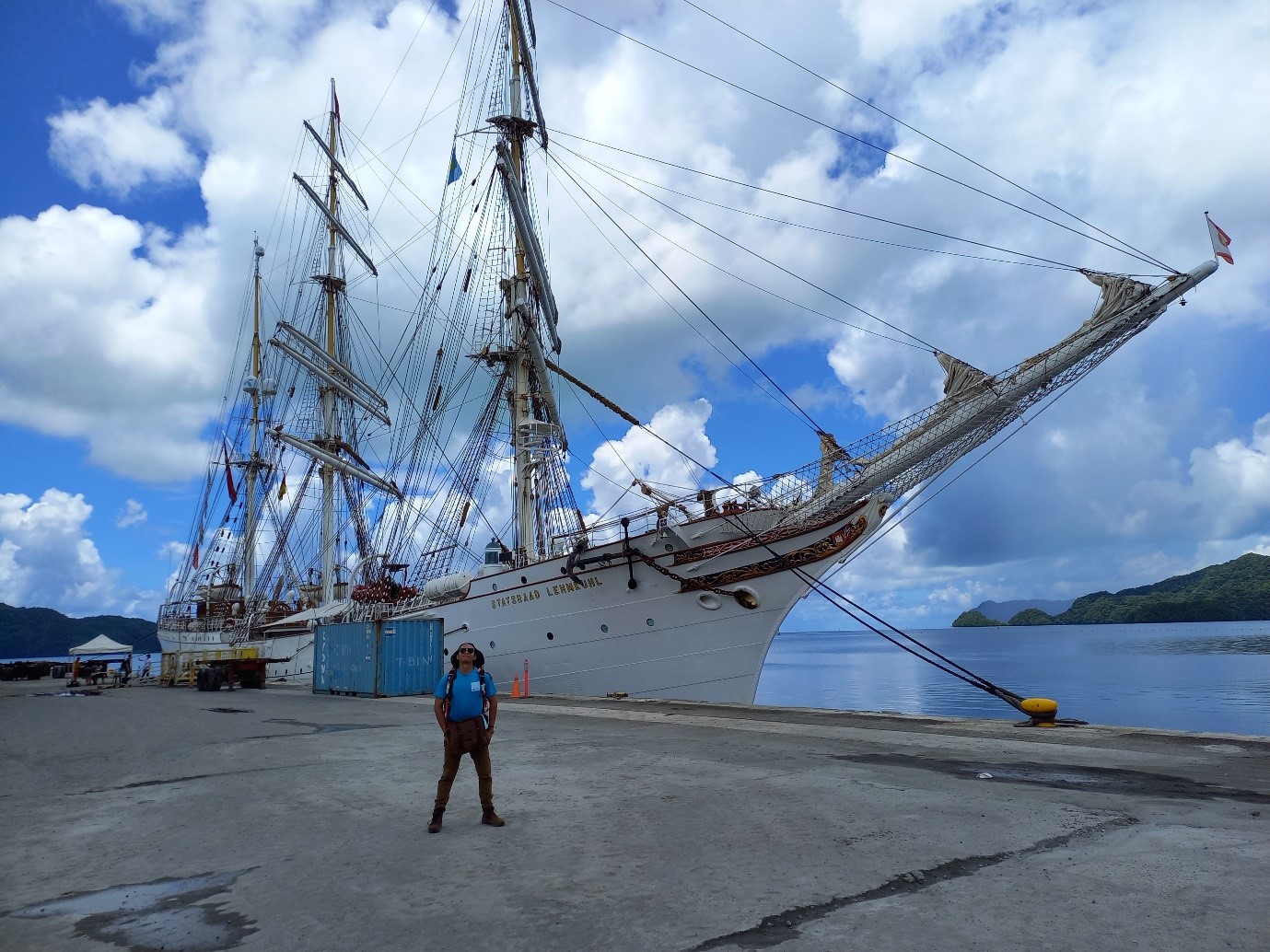Written by: Adi Prabowo Yudha Prajanto (15118055)
“Twenty years from now you will be more disappointed by the things that you didn’t do than by the ones you did do. So, throw off the bowlines. Sail away from the safe harbour. Catch the trade winds in your sails. Explore. Dream. Discover.”
Mark Twain
The quote was given by my supervisor, Pak Purbo, just a moment before I started my journey. Yes, I sailed away from the safe harbour. The journey started by an encouragement from one of my lecturers, Bu Gaby, to apply for a call for participation in the “One Ocean Expedition” initiative, funded by the Ocean Policy Research Institute (OPRI) of the Sasakawa Peace Foundation (SPF). The concept of the expedition is to circumnavitage the globe aboard a Norwegian tall ship, the Statsraad Lehmkuhl. The aim of the exdition is to highlight and share knowledge on the crucial role of the ocean for a sustainable development in a global perspective, recognized as part of the UN Decade of Ocean Science for Sustainable Development.
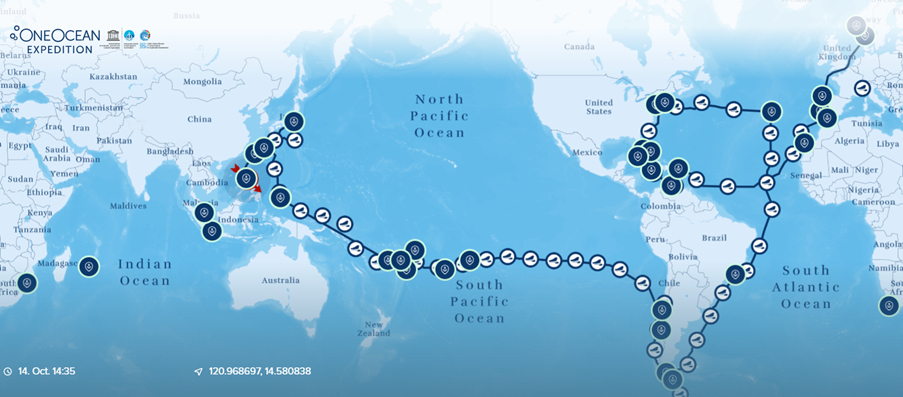
Yes, we are circumnavigating the Earth!
At first, I thought, it wouldn’t hurt to try. The only requirement to apply is a motivation letter and a proof of English proficiency. I wrote the motivation letter, had it revised by Bu Gaby, then fast forward to 20 July 2022… I received an email of acceptance from the SPF. I was among the six selected participants among around a hundred applicants! Although I was accepted, I didn’t want to get my hopes up because there were many administrative requirements that I needed to fulfil. I needed to apply both for a Japanese and a United States visa, because the expedition will embark from Palau and debark in Japan. The only way to reach Palau from Indonesia is through Guam, an organized, unincorporated territory of the United States in the western Pacific Ocean. But after two months of hard work and headache, I got to the point where I was really going to start off the journey.

A few of the student participants!
As I have mentioned, the expedition embarked from Palau and debarked in Yokohama, Japan. To reach Palau, I needed to go through a 26-hour travel from Jakarta, to South Korea, to Guam, then to Palau. What a journey! During transit in South Korea, I found my first expedition mate, Manel from Portugal. He one of the selected student participants, like me! Afterwards, I met my soon-to-be best friend on the ship, Sunniva from Norway. Little did I know, she is the daughter of the Norwegian Ambassador for Japan! We arrived in Palau to meet the other student participants and Ms. Nana Hashimoto, who was incredibly helpful during my expedition preparation. We had one free day before the departure, so I travelled around Palau by foot to one of its beaches. The night before the departure we had an online meeting with the SPF officers to get to know each other better and to get a better understanding on the purpose of the expedition.
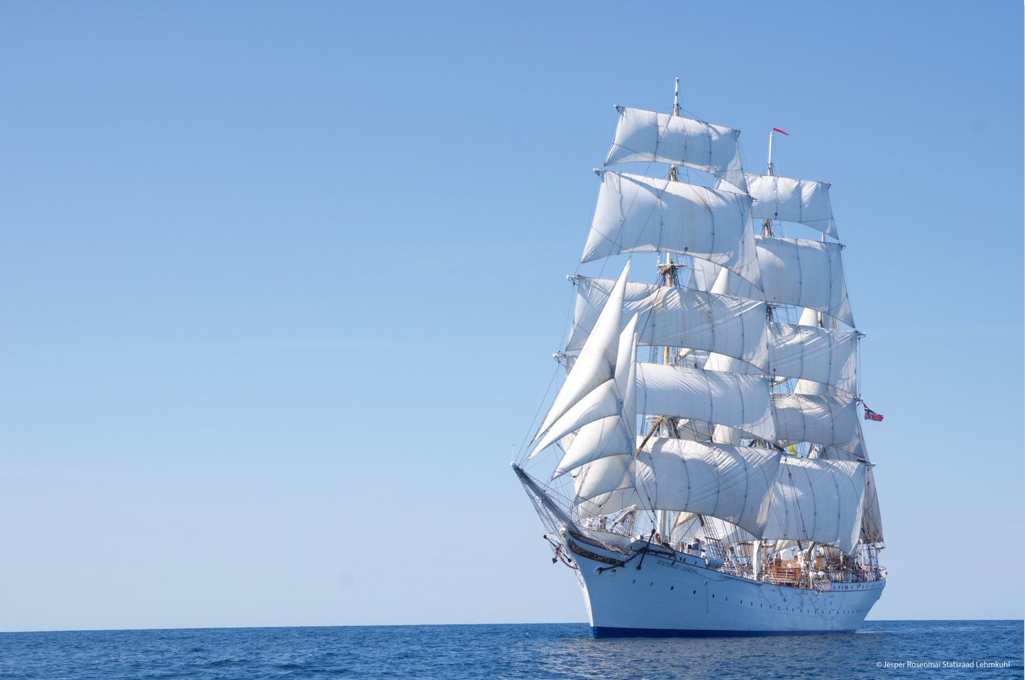
The beauty: Statsraad Lehmkuhl! Source: Telenorsat
On 27 August 2022, me and my friends went to the Palau Resort Port to board the Statsraad Lehmkuhl. I fell in love at first sight with the ship. She was tall and beautiful. We met with the crew to check in and have a tour around the ship. On the first day, we were informed on where we would sleep, eat, and do other daily activities. After the ship tour, we learned about how the ship watch works. Ship watch is basically our daily ‘office hour’. There are three different watches: Blue, red, and white. I was given the blue watch, which is 8 AM to 12 PM and 8 PM to 12 AM. We had our first watch of the day at 8 PM, and we were given four different physical watches through the watch hours, which are:
- Firewatch, which was looking for unwanted fire all around the ship,
- Lookout, which was looking for objects that would endanger the ship, such as other ships, islands, etc.,
- Buoywatch, which was looking if someone fell overboard, and,
- Helmwatch, which was steering the ship! It was crazy that we were only on the ship for a few hours, but we must learn how to steer the ship already!
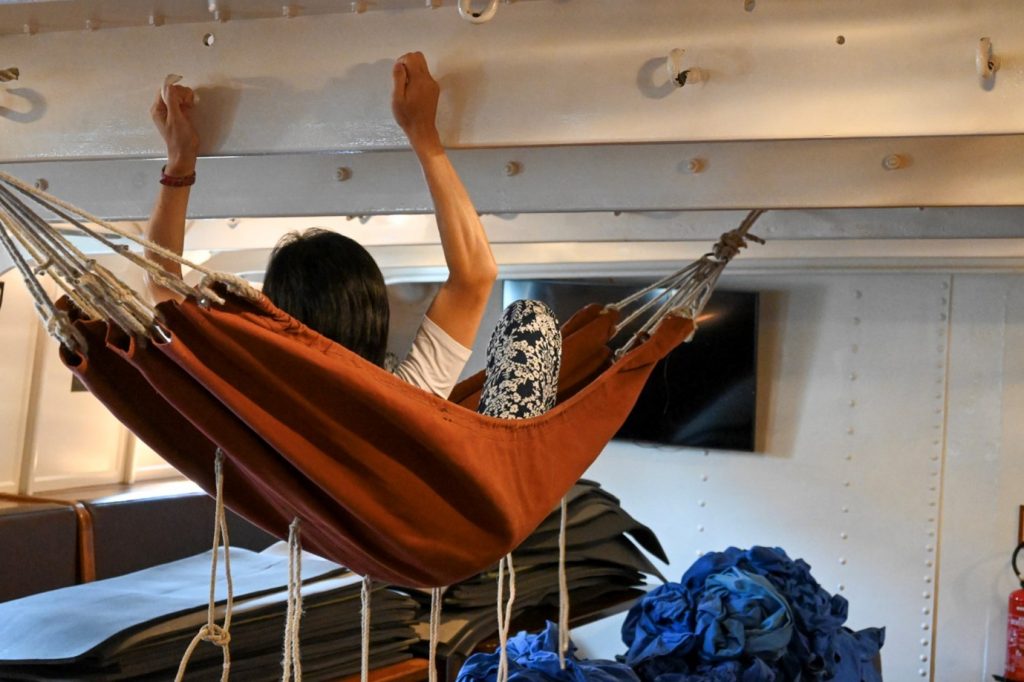
How we sleep!
The day after, we were taught about rigging. Rigging is an activity to go aloft on the mast to fern or loosen the sail. In short, we needed to climb the 48 m tall mast, and it was my favourite routine on this expedition! Why did I say routine? Because every morning and night we must muster up and the Adrian, the Blue Watch Master, will ask if anyone wants to go rigging. Everyone on the Blue Watch would stare at me and I would always say, okay, I’m going! It was so interesting when I was up doing the rigging. As the sea breeze stroke your face, you can look to the horizon and witness that… the Earth is truly rounded! And the teamwork needed to carry out this expedition was really something else. Once, I had to go up on the highest mast, or the “Royal Mast” alone, because the crew that was supposed to accompany me was feeling a little bit off that day. That was how I got the title of “The lonesome royal cuddler”!

“The lonesome royal cuddler” in action!
Other than the four physical watches, we also had to work on our 4-hour watch such as remembering all the rope names on the ship and understand how it works on the sail. We always have to pull some ropes on the watch and that was the reason of why we all had blisters on our hands! There were commands on pulling ropes, such as:
- Hold fast! ..means to hold the ropes tight,
- Så smått! ..means to loosen the rope a little while still holding it, and
- Come up! ..to let go of the rope.

Our daily views!
There were also whistles. One whistle means hall away the ropes, and two whistles means stop. After all is set, we had to make fast the ropes and that was why we needed to learn how to do some knots and coiling. At night, we had our own Statsraad Lehmkuhl “red light district,” which was when all of the ships light turned off and only red LED was turned on. There was one corner with a whiteboard and a red light. That was where our lectures were conducted. There were many kinds of lectures on the ship, such as knotting, sail naming, rope naming, steering the wheel, and even sailor tattoos class!
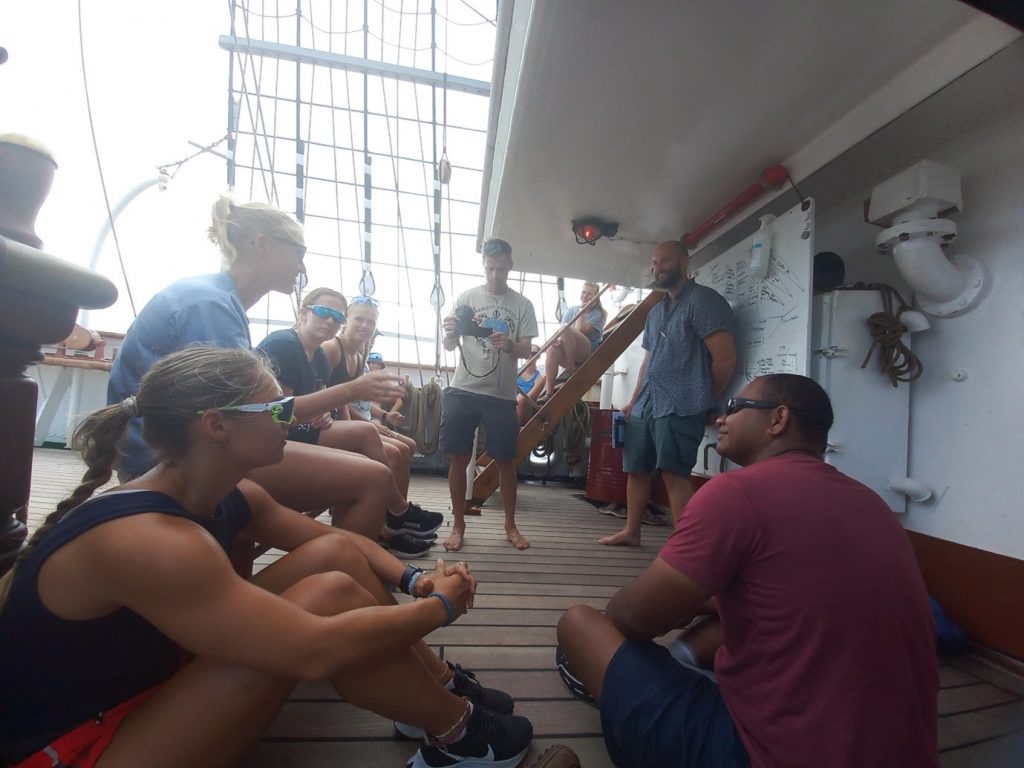
Our own “red light district” each night

Yours truly, an avid learner
After the watch, we had 7 hours of sleep and 8 hours of free time. It was not truly a “free time” because we used it for workshops, captain briefings, and discussions. The workshops we had were delivered by a Norwegian researcher, with topics ranging from CTD (conductivity, temperature, and depth profiler), microplastic, oceanography, fisheries, and other oceanic components. The six selected participants, including me, were also given time to deliver a workshop on the background of the SPF, life in Palau, Okinawa, Fiji. And me, I introduced Indonesia and hydrography to the audience! Afterwards, there was a workshop on three ARGO floats, a type of oceanic instrument deployed along the expedition. Tere was also a presentation on the ocean’s warm weather, La nina, and El nino by Ayako-san, a Japanese researcher. I also had some discussions on sustainability with my Blue Watch mates and the Second Mate of the ship, and a spontaneous discussion with Gabriel (a participant from Fiji), Hanny (a participant from Norway), and all of the ship’s crews about fisheries and its territorial dispute! As a geodesist, I mainly present about the role of a map. At one time on the ship, I managed to go to the research room to look at the echosounder interface and had a look at the problem it was having. Sadly, I could not help much, because they did not keep the manual and of course, we had no internet connections!
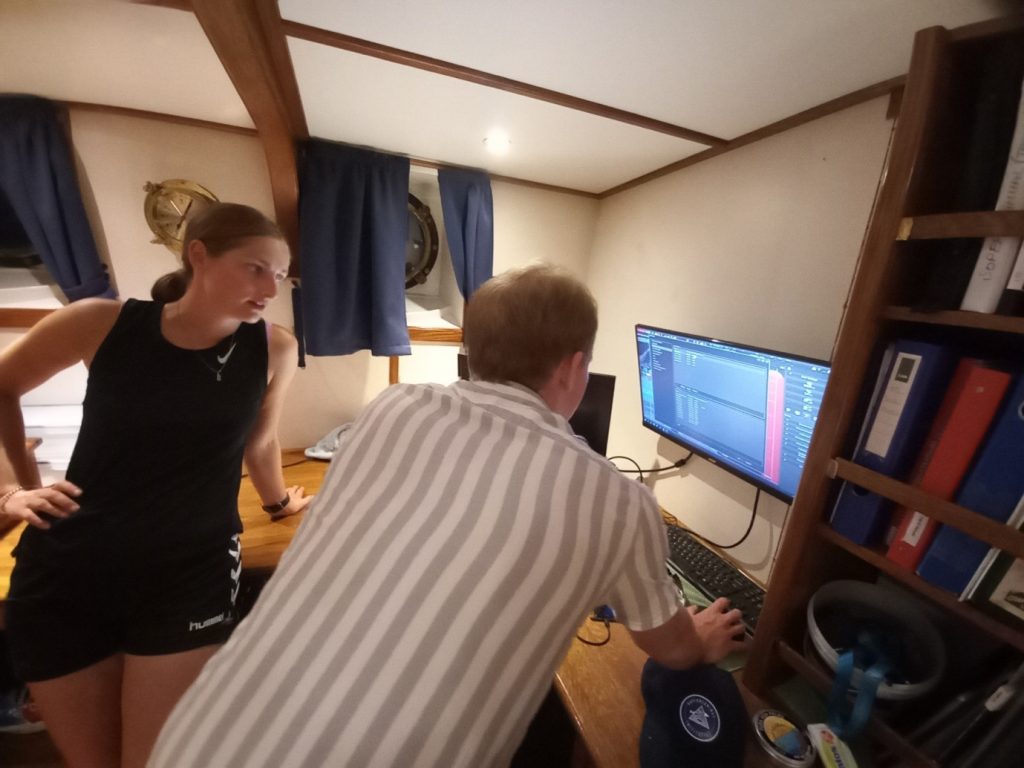
The research room!
At the end of the expedition, we had “Lehmkuhl Games,” which was a competition between watches on a variation of games, such as knots and hitches, throwing a line, coiling with closed eyes, harnessing up, finding the rope, tidying the banier, rope pulling, shanty singing, and teammates. Looking back, it was crazy that I didn’t even understand what the meaning of each game watch, but at that time, they have been incorporated in my ‘ship vocabulary’! Two nights before we arrived in Yokohama, we had the final Lehmkuhl Game, which was shanty singing, and we were really tight on points with the other watches. But because of our hard work and great team bonding, my watch, the Blue Watch, won the game!!! On our last night on the ship, time really flew by. It was almost felt like only one week being on the ship, while it was truly 16 days sailing from Palau to Yokohama! So, to whomever which will be boarding on the ship next, I would guarantee that you will make good friends, eat good food, meet good teachers, see good views, get good blisters, acquire good knowledge, had good discussion, and lastly, god yakt (look for the meaning yourself!)
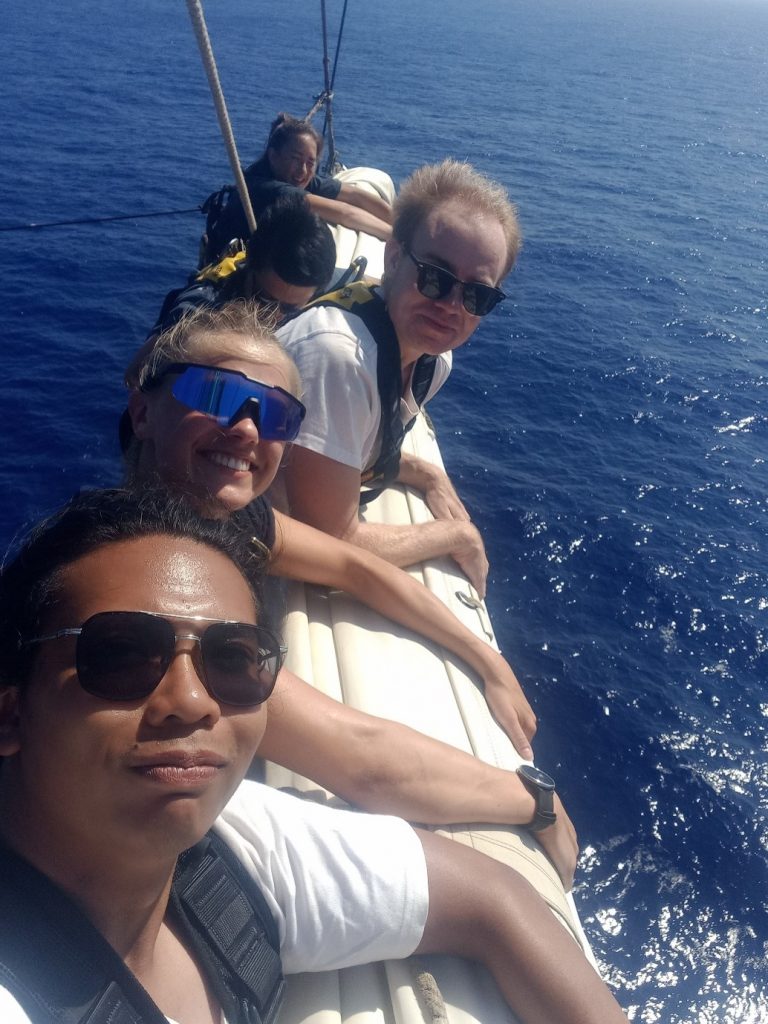
Blue Watch!
After arriving in Yokohama, most of the ship members went on separate ways to travel Japan, but not with the six chosen applicants – we had a really tight schedule! On the first night in Yokohama, we had a reception on the ship with ambassadors from all over the world. It was very formal and we met a lot of important people. The next day we had an open ship exhibition on the ship. We were given a 5-hour watch on the OPRI-SPF stand, where we needed to talk to people about our experiences on the ship. We met with the Head Researcher of the SPF on the exhibition and talked about the marine life and how all creatures on the Earth are connected. From the sound of a whale to the whistle of a bird, we are all connected! That conversation truly sparked my interest to pursue a master’s degree.

Our final presentation. You can watch it here!
The next day, we had the 191st Ocean Forum on the First Port Call of the Statsraad Lehmkuhl in Asia and the UN Decade of Ocean Science: What We Must Do to Correct the Knowledge Divide in Ocean Science. The keynote speakers were Dr. Vladimir Ryabinin, the Executive Secretary of IOC/UNESCO, François Houllier, the Président directeur général of IFREMER, as well as the Palau and Norwegian Ambassadors. The six selected students were also given the chance to report the experiences on the ship. Lucy, from New Zealand, and I, was selected to present on behalf of the six of us! At the point of this expedition, we must tidy up! Especially, to put things where they belong and to help each other. Afterwards, we had a formal dinner and spoke with many people. Shortly, it was the best thing that has ever happened in my life.

So long, beauty!
